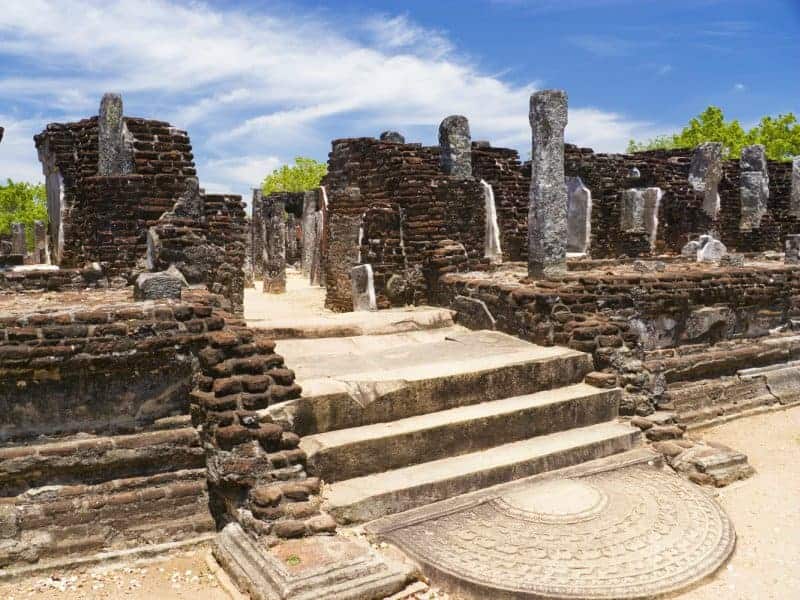Also known more colloquially as the Buddha Seema Pasada, the Convocation Hall had been among the most incredible buildings in the northern Rajarata kingdom. The chronicle Chulavamsa cites it as being twelve stories high and with 108 stone pillars. It was built by Parakramabahu the Great of Polonnaruwa and is part of the extensive Alahana Pirivena complex.
Alahana also includes both a learning institute for monks and nuns as well as a hospital, temples, and living quarters, thus being a proper center of Buddhist activity of the 12th Century AD. It was built after he reunited the Polonnaruwa monks under one sect once more. Buddha Seema Pasada was done in order to give the monks a proper place to live, meet and discuss religious and secular matters.
Here, the word “seema” indicates the limits of the building floors, set by the various boundary stones. The lowermost floor is roughly 106×113 square feet in area. We also know that much of it had been painted red, with flecks of paint still preserved among the ruins. They are in relatively good preservation and we can guess with some confidence that the whole structure would have looked somewhat closer to most other chapter houses of its kind. For example, we often reconstruct these buildings, such as the famed Lohada Pasada and Sathmahal Pasada with a large, pointed tiled roof on top, and the whole building itself tapers upwards. Thus they would have had just a passing resemblance to an East Asian pagoda, but only slightly. In the very middle is a massive stone platform, half-buried but we know that it may have supported either a roof or an awning of a sort. From this platform, the chief monk would deliver his messages and the others would probably sit on the floor around him. The actual edict by the king was known as the Polonnaruwa Kathikawatha.
Written by Vasika Udurawane for Travel Lanka Compass



0 Comment